People who have had hair transplant surgery may be distressed by a lack of hair growth, as well as a decrease in hair density. It is critical to understand what happens to your existing hair, as well as the transplanted hair after surgery.
Throughout my career, I’ve been performing hair transplant surgery. I also founded TrichoStem Hair Regeneration Centers, which provides a non-surgical stem cell-based treatment for male, and female pattern hair loss. TrichoStem Hair Regeneration was inspired by observations made while using wound healing technology to improve hair transplant results. TrichoStem Hair Regeneration has offered customized treatments to help people with genetic pattern hair loss since 2011. The effects of TrichoStem Hair Regeneration include the reactivation of dormant hair follicles, and the thickening of thinning hair, which provides significantly improved scalp coverage.
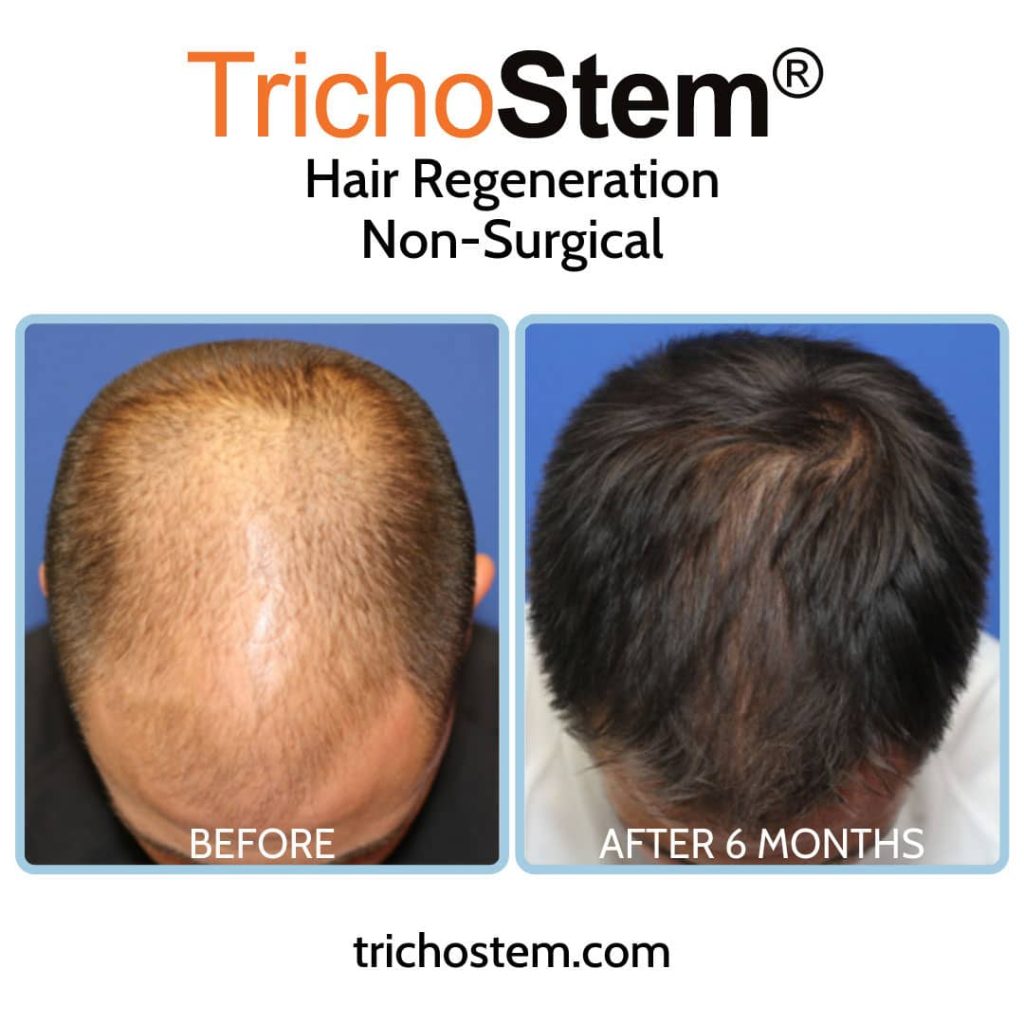
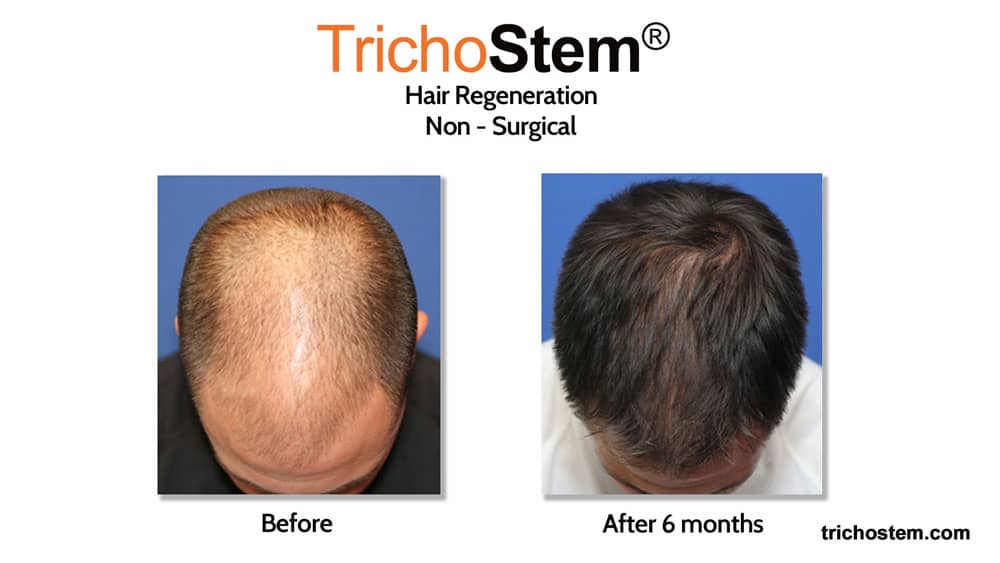
Causes of Hair Loss After Hair Transplant
Shock Loss
Shock loss is a common cause of hair loss soon after a transplant. Shock loss occurs as a result of a variety of factors, including the physical trauma caused by hair transplant surgery on the scalp. For example, if a hair transplant consists of 2000 hair grafts surgically implanted into the scalp, 2000 stab incisions in the scalp were made. This level of trauma results in scalp bleeding, inflammation, and potential vascular compromise.

As a result, both native and transplanted hair may shed shortly after the transplant surgery. This frequently means that a hair transplant patient experiencing shock loss may appear to have less hair after surgery than they did before surgery.
Shock loss is only temporary. The hair follicle remains intact in shock loss, so hair will grow back over time. This is one of the reasons why the full results of a hair transplant can take up to a year or more.
Ingrown Hair Grafts
Ingrown hair grafts are a less common reason why some hair does not appear to grow after a transplant. Hair grafts can grow inward, so their length changes very little over time. In such cases, the skin must be opened and the hair must be released in order for it to grow.
Collateral Loss
Collateral loss is a more serious cause of hair loss after a transplant. When hair grafts are surgically placed close to existing hair, this happens. The needle, blade, or implanter used during hair transplant surgery can permanently damage existing native hair follicles. Collateral loss, as opposed to shock loss, is a permanent loss of native hair caused by the trauma of hair transplant surgery. Surgeons frequently justify or rationalize collateral loss by assuming that the native hair is already thinning so it will eventually be lost anyway. Collateral loss is one of the reasons why hair transplants are not recommended for most cases of female pattern hair loss, where hair is thinning diffusely throughout the scalp, increasing the likelihood of native hair loss during transplant surgery.

Hair Loss Treatment for Thinning Hair
We approach hair restoration differently in our practice. Instead of viewing thinning hair as something that will eventually be lost, we see it as something that can be improved to the point where the results can outperform even hair transplant surgery. Hair has a natural density of 50-100 hairs per square centimeter, which is much higher than the density of transplanted hair. Hair grafts can generally only be transplanted at a density of about 20 hairs per square centimeter because of the blood supply required to keep the grafts alive. Excessive use of this number may result in the loss of some or all hair grafts.
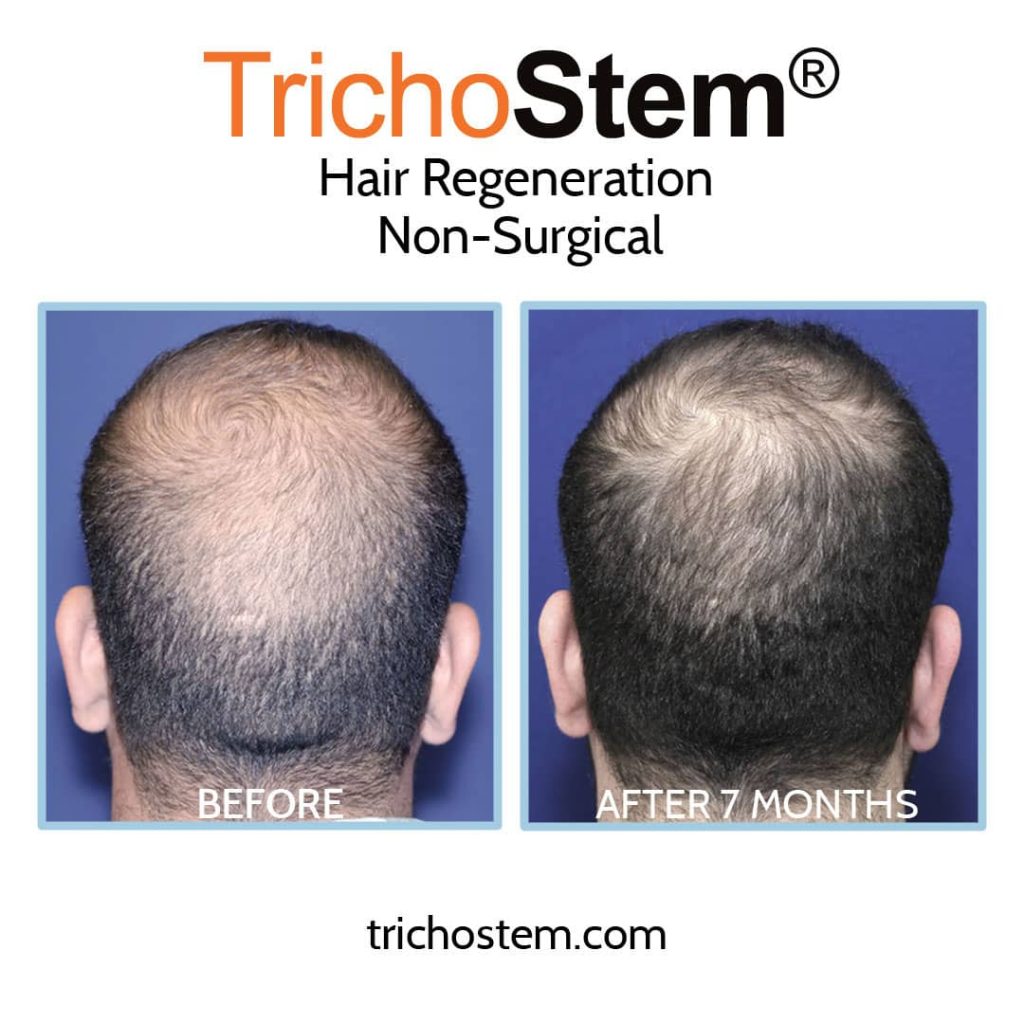
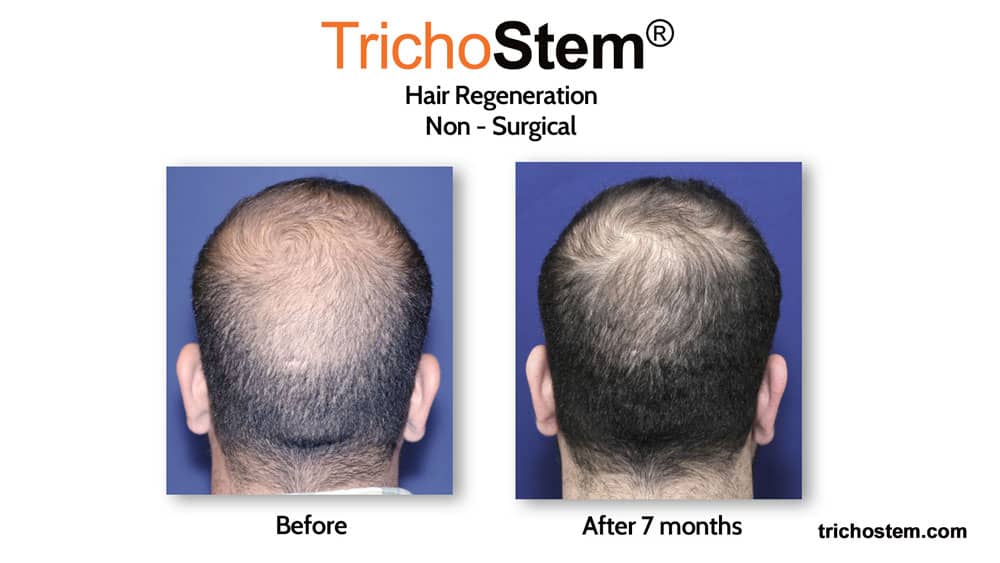
The improvement in scalp coverage achieved by thickening thinning hair with our Hair Regeneration treatment reduces the area of the scalp that would require hair transplant surgery. Since native hairs are much denser than transplanted hair, non-surgical hair thickening can achieve more coverage and density than any transplant procedure. In fact, in the right patient with significantly thinning hair, the TrichoStem Hair Regeneration treatment can outperform not one, but two hair transplant surgeries in terms of density and coverage.
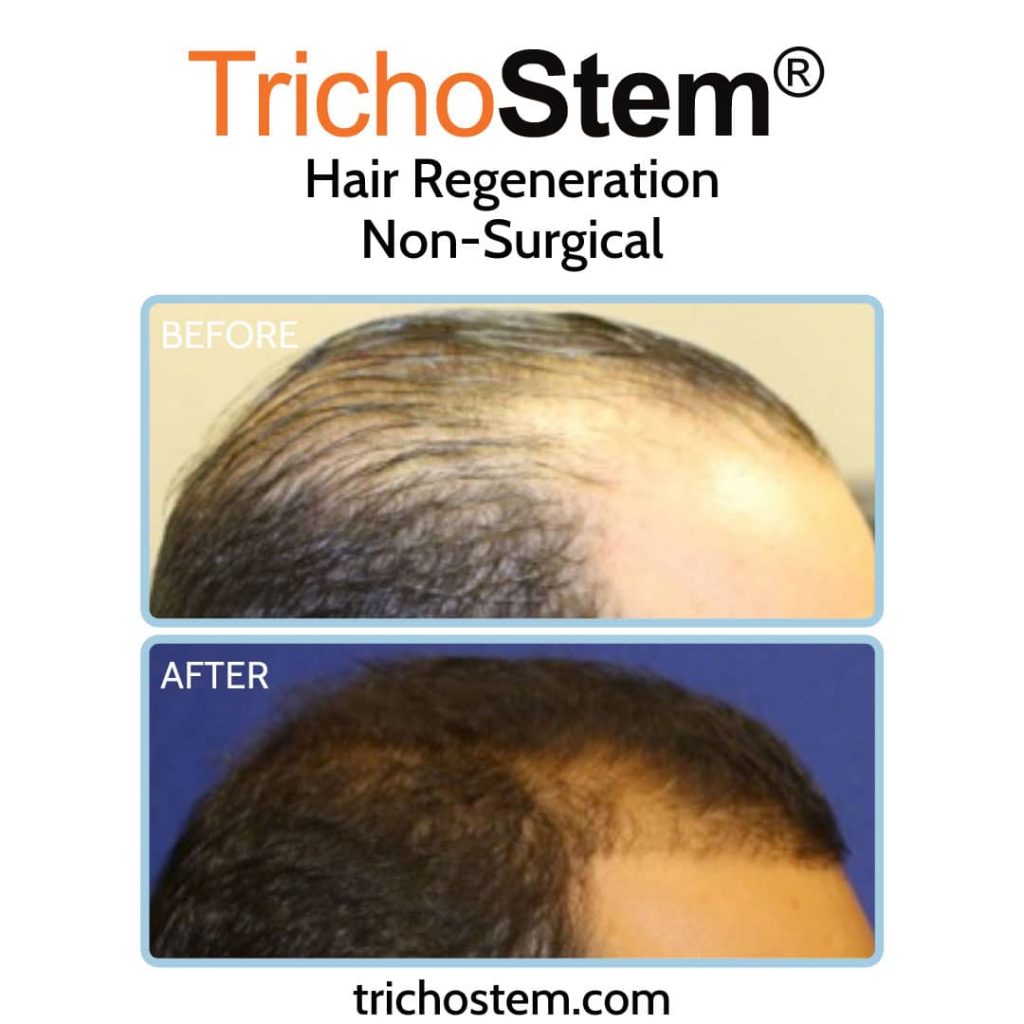
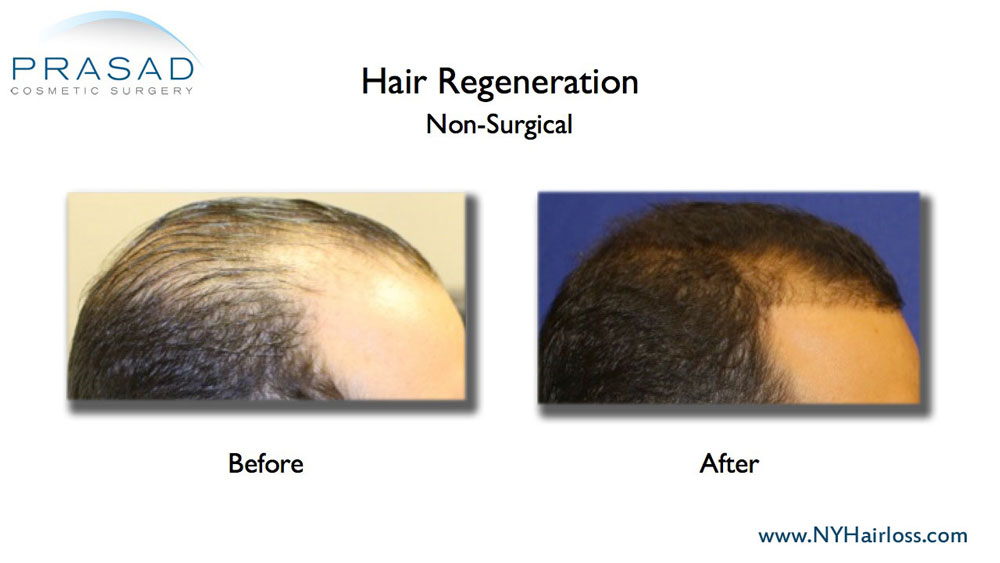
TrichoStem Hair Regeneration consists of platelet-rich plasma, or PRP, and extracellular matrix by ACell. PRP, which is a concentration of wound healing and growth factors present in your blood, is used in combination with an extracellular matrix. Doctors are using PRP alone to treat pattern hair loss. Although there can be some benefits, we know from experience that it’s not comparable to TrichoStem Hair Regeneration.
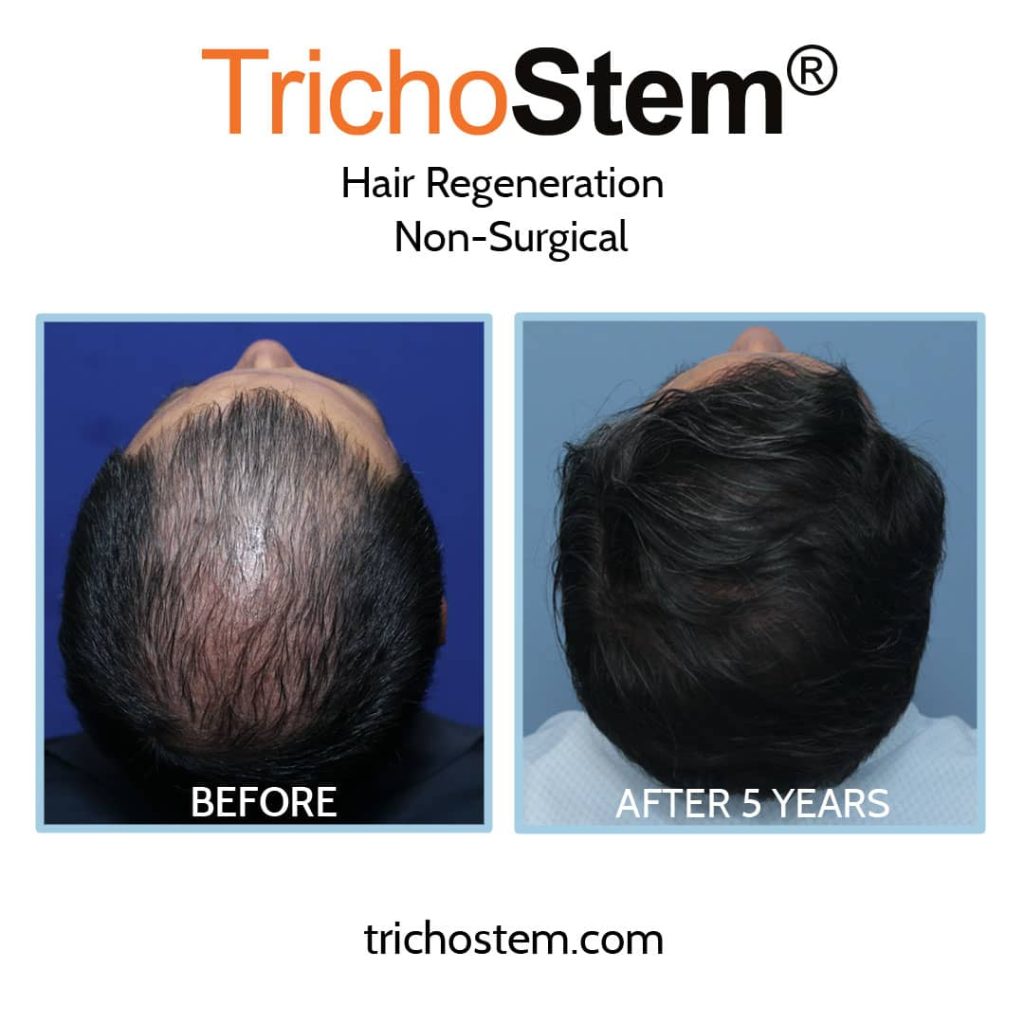
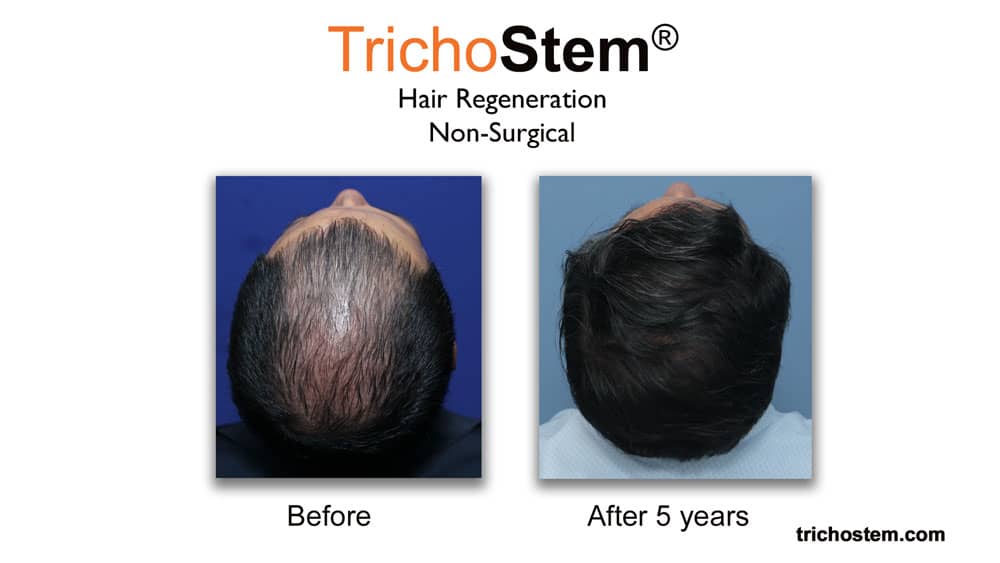
Some doctors are combining PRP with a standardized dose of ACell. Since 2011, as one of only a few doctors using ACell, I’ve treated patients from all over the world and have seen consistent and predictable results, with visible long-term improvement in over 99% of genetic pattern hair loss patients, both men and women. Each treatment is tailored to the individual based on an algorithm I developed over many years of experience that takes into account gender, age of onset of hair loss, degree of hair loss, current age, and other medical therapies being used. Most patients only need one treatment session for thicker hair and fuller coverage, and results can be expected to last 3-5 years. Some patients with more advanced hair loss have a second treatment, which we call the booster, 15-24 months after the initial treatment at no additional cost.

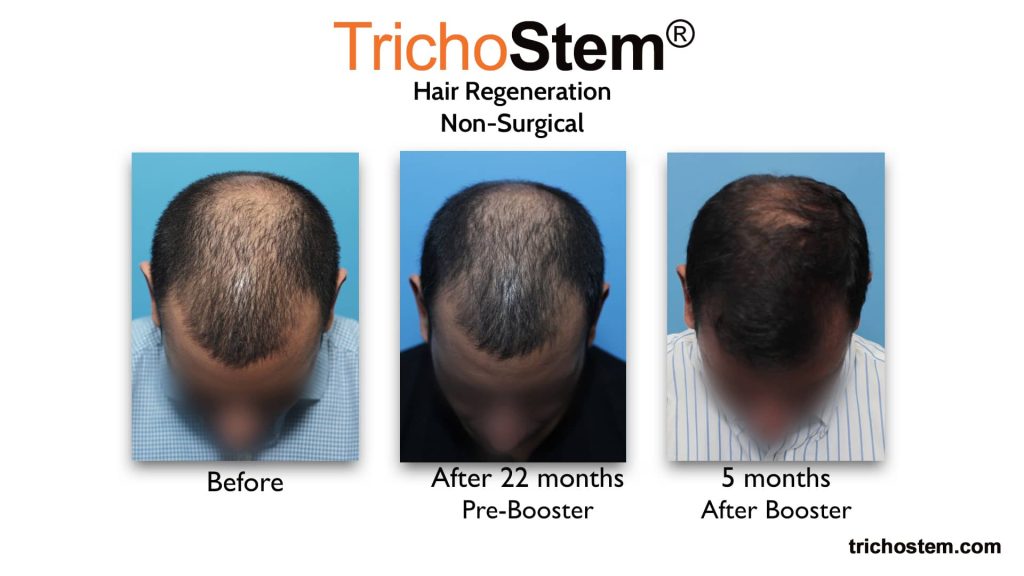
While the Hair Regeneration treatment is mostly used on its own, it can also be used to help people who have had hair transplant surgery. I’ve discovered that performing TrichoStem Hair rRegeneration treatment between 1 and 3 months after a hair transplant improves hair transplant outcomes. There appears to be an advantage to both the hair grafts, and the native thinning hair. I’ve also noticed that the grafts grow faster than expected, which means that the duration of the effects of shock loss is reduced. Better scalp coverage in the short and long-term is the overall benefit.
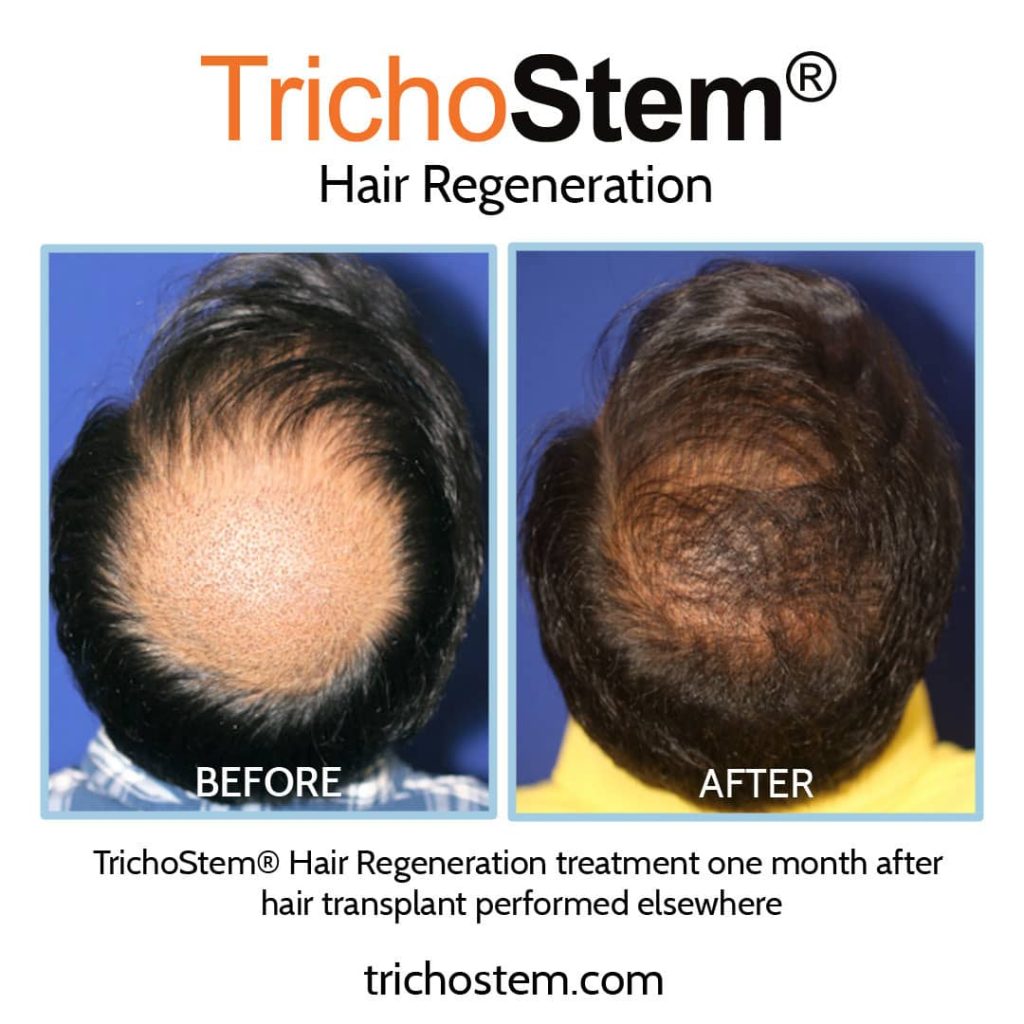
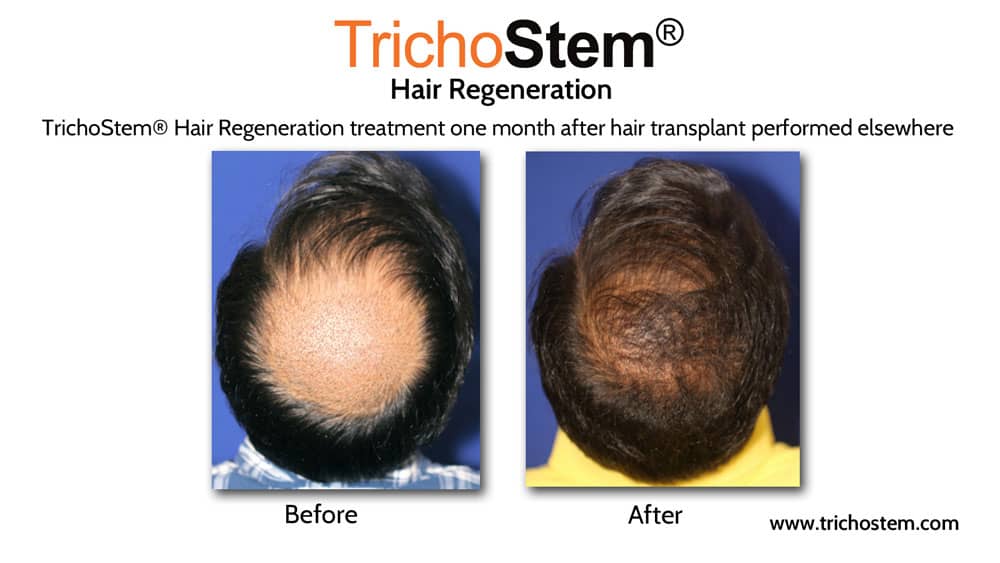
Conclusion
Hair transplant surgery can be very effective, but it has limitations. It’s important to plan ahead of time to maximize your scalp coverage for as long as it’s genetically permissible. If you’ve experienced significant hair loss after hair transplant surgery, stem cell-based hair loss treatment may be beneficial to help you improve your final results; otherwise, wait one year after hair transplant surgery to evaluate your final results.
